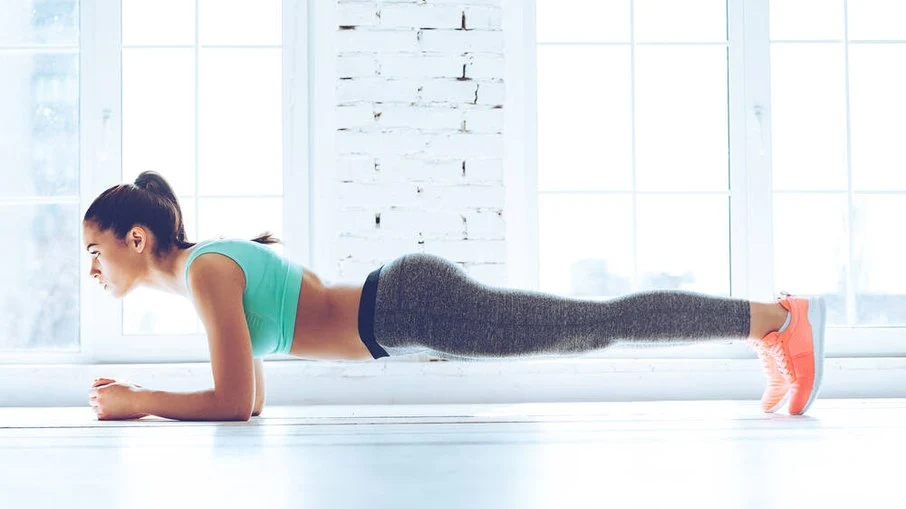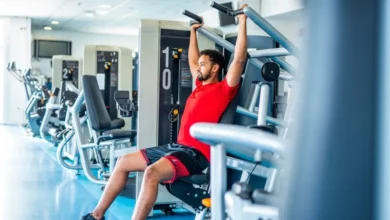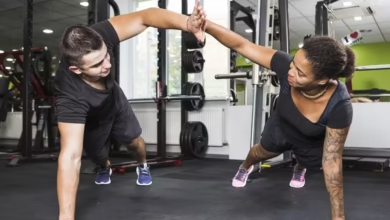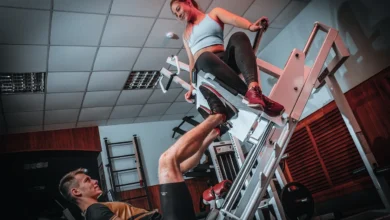See more CONTENT like this. Follow our PAGE

Multi-joint plank: a complete exercise that strengthens the entire body
The plank is often remembered as an abdominal exercise, but its impact goes far beyond that. Known as the multi-joint plank, this isometric position simultaneously activates several muscle groups, promoting strength, postural stability, and endurance in an integrated way.
According to exercise physiology and functional training specialist Magno de Oliveira, the plank engages more than 60% of the trunk muscles, including the lower back, shoulders, and trapezius, as well as the glutes. This exercise is rooted in traditional methods, such as those developed by Joseph Pilates, who emphasized controlled and precise execution rather than holding positions for long periods. His focus was on strengthening the body and mastering movement patterns, not simply measuring static endurance.
Execution requires attention: holding the plank for long periods without correct technique (such as five minutes with the lower back collapsing) is less effective and potentially risky. Experts recommend sets of 30 seconds to 1 minute, focusing on proper alignment — neutral spine, hips aligned, stable shoulders — before increasing time or adding variations.
The plank is more than just an exercise for a “flat stomach.” It contributes to balanced posture, helps prevent lower back issues, and improves core coordination (abs, lower back, and pelvis), supporting healthy spinal alignment.
Why is the plank considered one of the most complete exercises?
In addition to engaging the deep core muscles, the plank also strengthens:
- Lower back and postural stabilizers, essential for reducing pain and preventing deviations such as hyperlordosis.
- Shoulders and trapezius, which support body weight during the exercise.
- Glutes, involved in maintaining contraction for proper alignment.
- Motor coordination, since it requires simultaneous control of different body segments.
This broad engagement makes the multi-joint plank a powerful exercise for those seeking functionality and efficient results.
Safety and smart progression
Correct plank posture is essential. When the hips lose alignment or the lower back arches, the load shifts directly to the joints, especially the spine and shoulders. This can cause discomfort or even injuries.
Certain conditions require caution or may contraindicate the exercise — such as herniated discs, abdominal diastasis, shoulder injuries, or pregnancy. In these cases, consulting a healthcare professional is crucial.
To progress safely, a gradual approach is recommended. Start by including the regular plank in all training sessions, and later explore more challenging variations such as:
- Side plank, which targets the obliques.
- Plank with elevated legs or step movements, to increase difficulty.
- Dynamic plank, alternating support between hands and feet.
The value of consistency over extreme challenges
Milestones like the world record held by a 58-year-old Canadian — who maintained the plank for 4 hours and 30 minutes — show the mental endurance involved. Impressive as it is, this achievement comes from intense physical preparation and exceptional determination.
In everyday training, however, the goal should be consistency rather than records. Maintaining solid technique a few times a week delivers real benefits for strength, posture, balance, and body control. It is a continuous investment in health and functional fitness.
How to effectively incorporate the plank into your routine
- Technique first: prioritize correct plank posture before increasing duration.
- Consistency: practice the plank 2 to 4 times per week.
- Gradual progression: advance with variations once you master the basic form.
- Combine with other exercises: pairing with rotations, hyperextensions, and squats enhances overall body impact.

Hello! My name is Alan Teixeira and I am passionate about helping people live healthier, more balanced lives. From mindful eating to daily habits that promote physical and mental well-being, I believe that small, consistent changes can lead to powerful transformations.
I created this blog to share practical tips, reliable information, and thoughtful insights that can inspire you to take better care of yourself—with balance, mindfulness, and positivity.
If you are looking to improve your health, nourish your body, and build a lighter, more fulfilling routine, you are in the right place. Welcome!





